
Feel free to add tags, names, dates or anything you are looking for
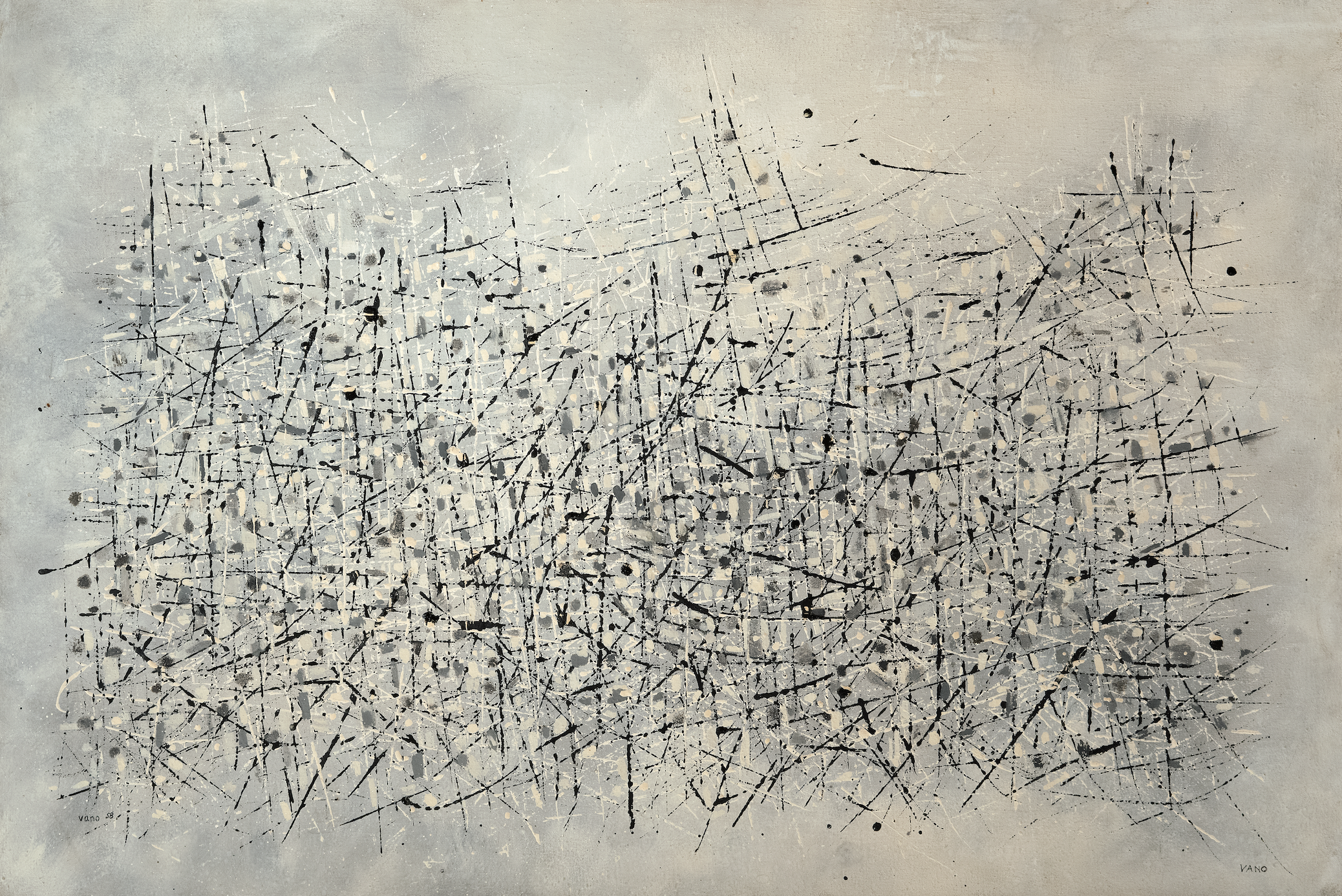
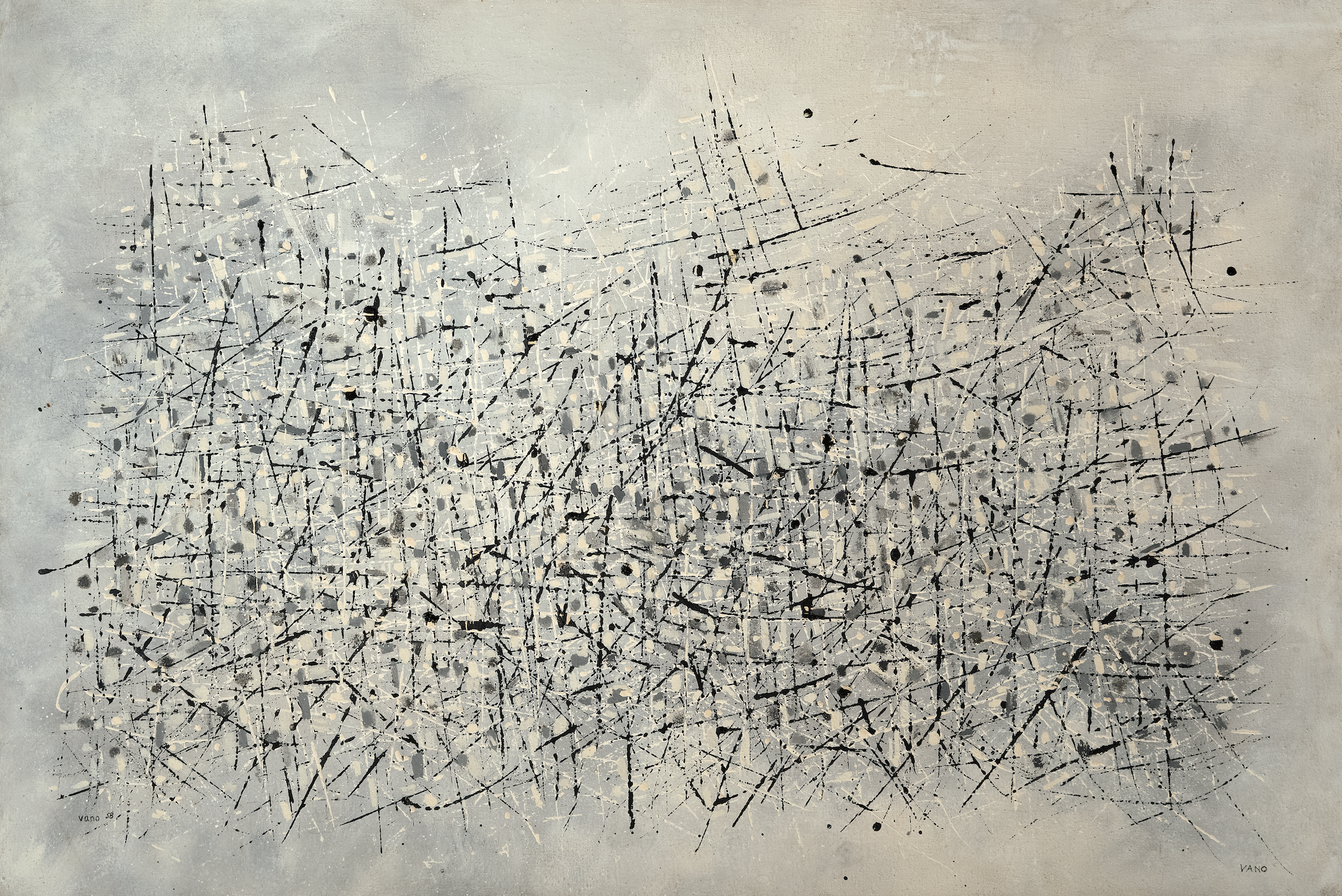
Ivane (Vano) Enukidze (1907, Kutaisi–1979, Paris) was a Georgian artist with a diverse education. He moved to Paris illegally in 1929 and established himself there as an artist. For decades almost unheard of in his home country, Vano Enukidze's innovative style of abstraction finally made him a name on the Georgian art scene in the 21st century.
In 1929, when Vano Enukidze arrived in Paris, he had already graduated from the Faculty of Socio-Economic Sciences of Tbilisi State University. Together with other young people, Enukidze had been involved in fighting for Georgia's independence, and, seeing the situation worsening in his homeland, he realized it was becoming increasingly risky for him to stay. Without a doubt, he intended to return to Georgia, but circumstances prevented him from ever doing so.
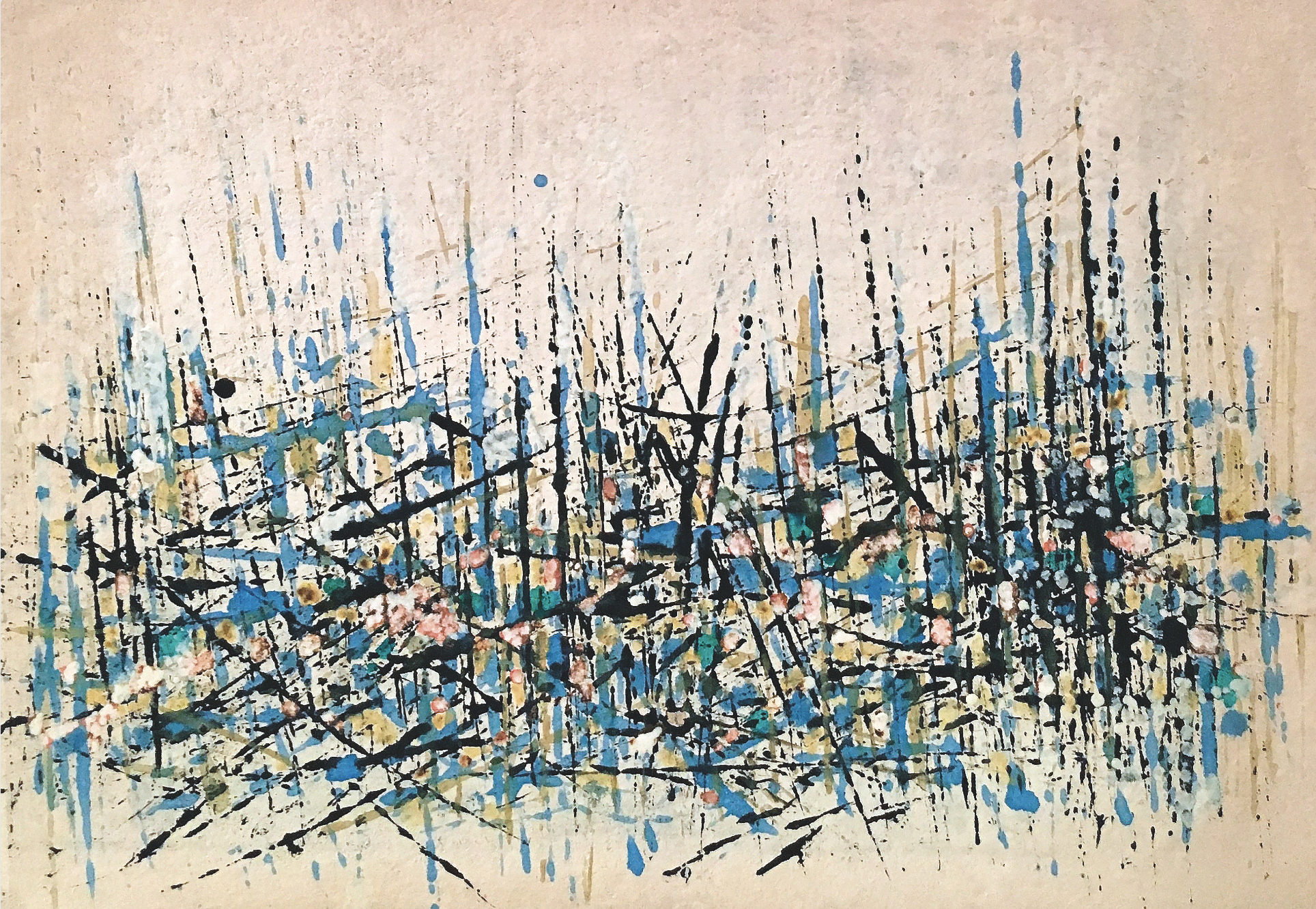
Vano Enukidze (1907-1979). Abstraction. Mixed technique on paper. 22x39. 1950ies. Private collection, Tbilisi
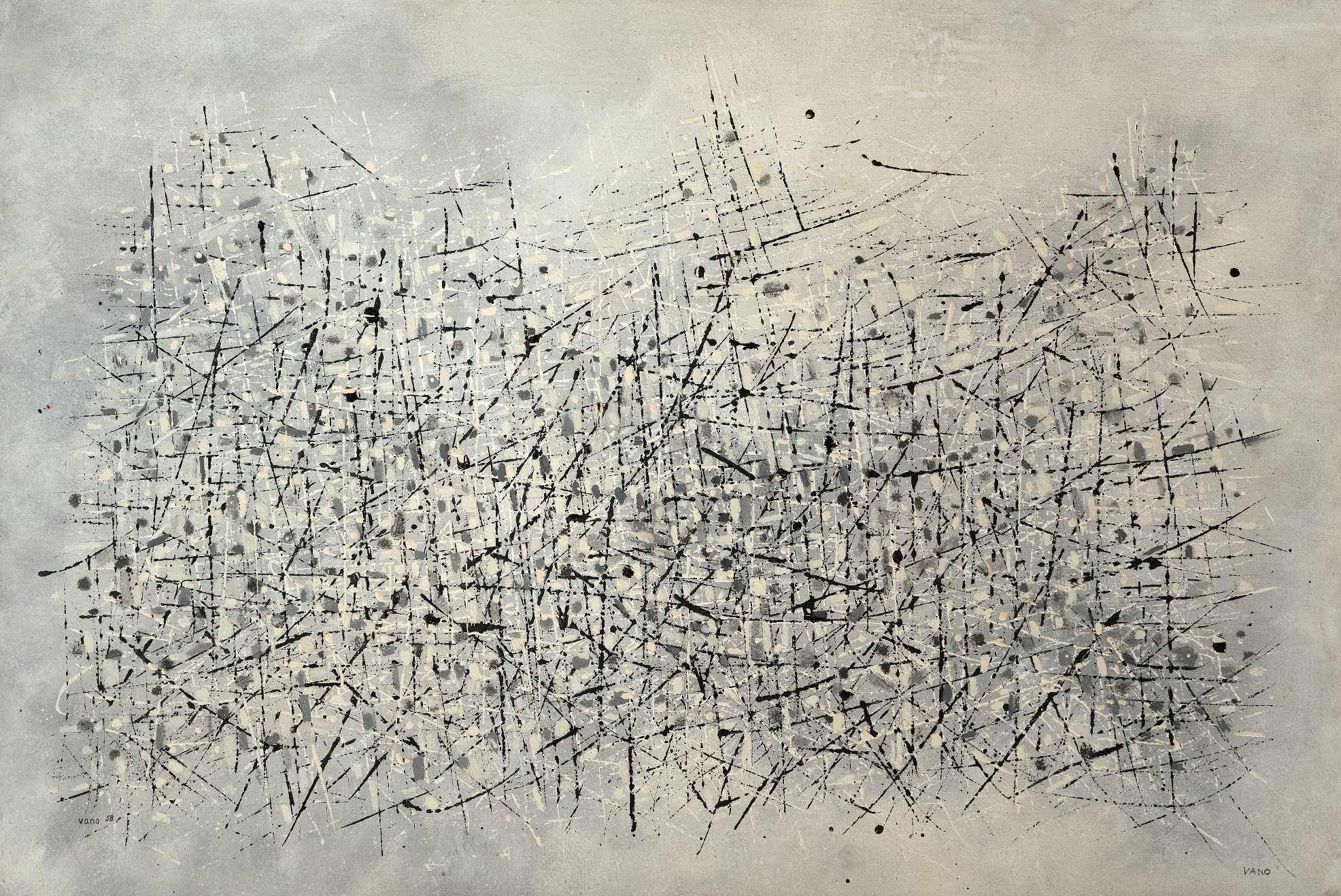
Vano Enukidze (1907-1979). La santa Maria. Canvas, oil. 62x91. 1958. This work is part of ATINATI Private Collection
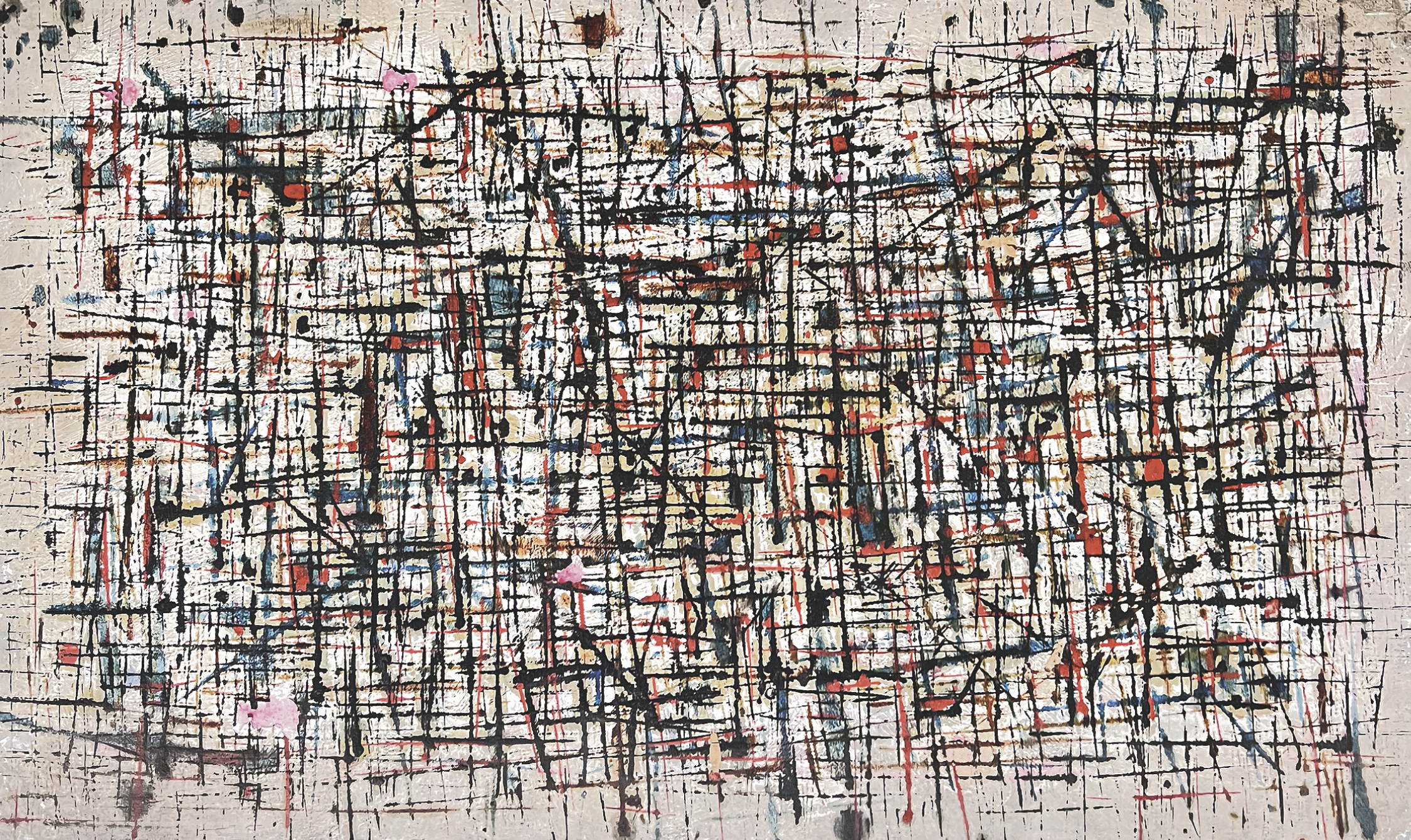
Vano Enukidze (1907-1979). Abstraction. Oil on canvas. 72x91. 1960ies. Collection of George Bagrationi, Tbilisi
Enukidze traveled to France via Turkey. He was initially taken in by the artist Vera Pagava and her family. Within Vera and her friends' social circle, Enukidze developed an interest in painting. Vera Pagava belonged to the Parisian community of advanced young painters, and among her friends were Roger Hilton (1911-1975), Maria Helena Vieira da Silva (1908-1992), Nicolas Wacker (1897-1987), alongside other forward-thinking creative young people. Impacted by this environment, Enukidze decided to take up studies at the Académie Ranson in Paris.
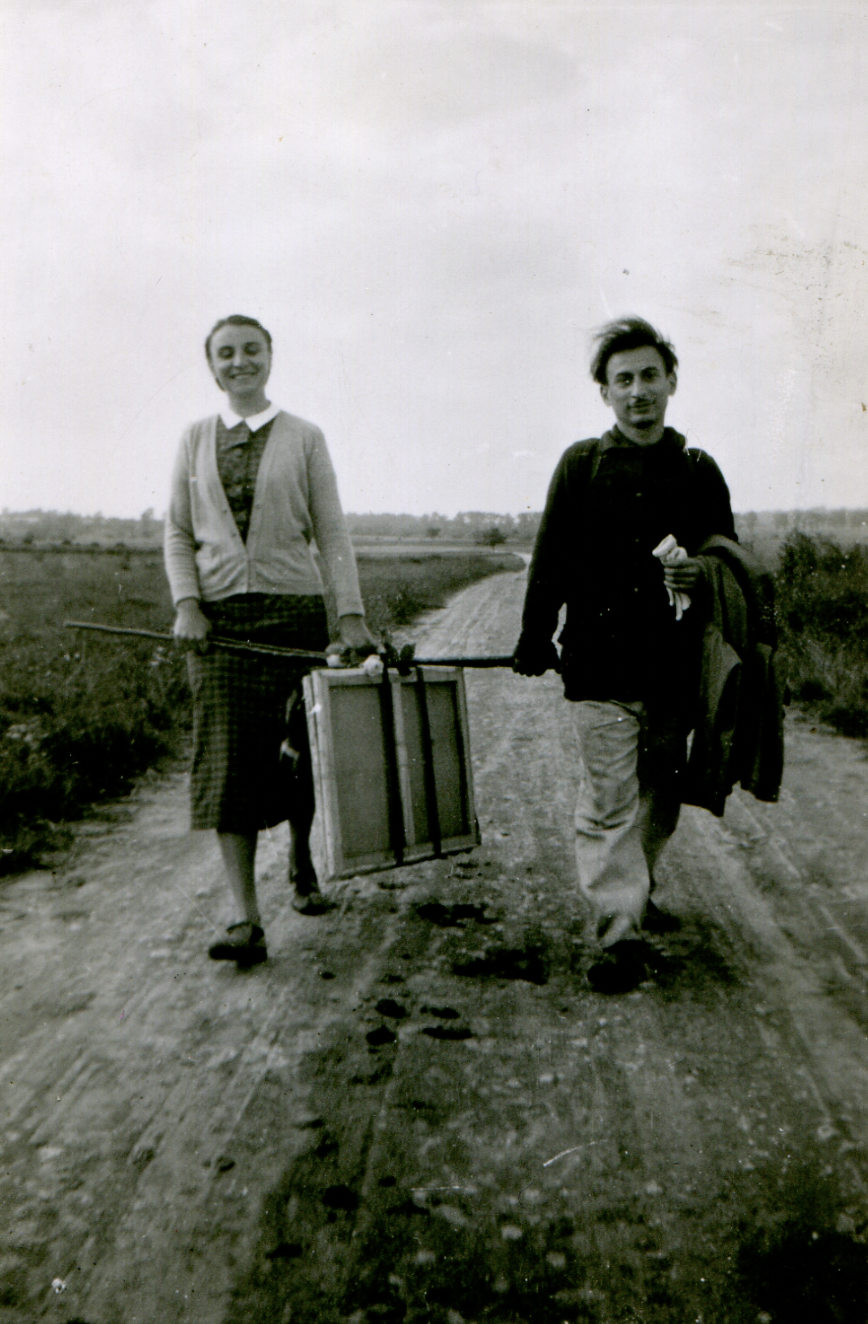
Vera Pagava and Vano (Ivane Enoukidze) on the road in the country side carrying canvases. 1932-35. Unknown photographer (c) Archive courtesy of Association culturelle Vera Pagava - ACVP
From 1937 to 1940, Enukidze studied under the renowned French abstract artist Roger Bissière (1886-1964), and went on to work enthusiastically in the field of painting, although it was not until 1955 that he chose to devote himself to it entirely. Before that, from 1946 to 1948, he attended the Faculty of Law at the University of Paris, where he earned a PhD and was awarded a scholarship to continue his studies at The Hague Institute of Law. As such, Enukidze was extremely educated in a variety of subjects- knowledge that was reflected in his paintings.
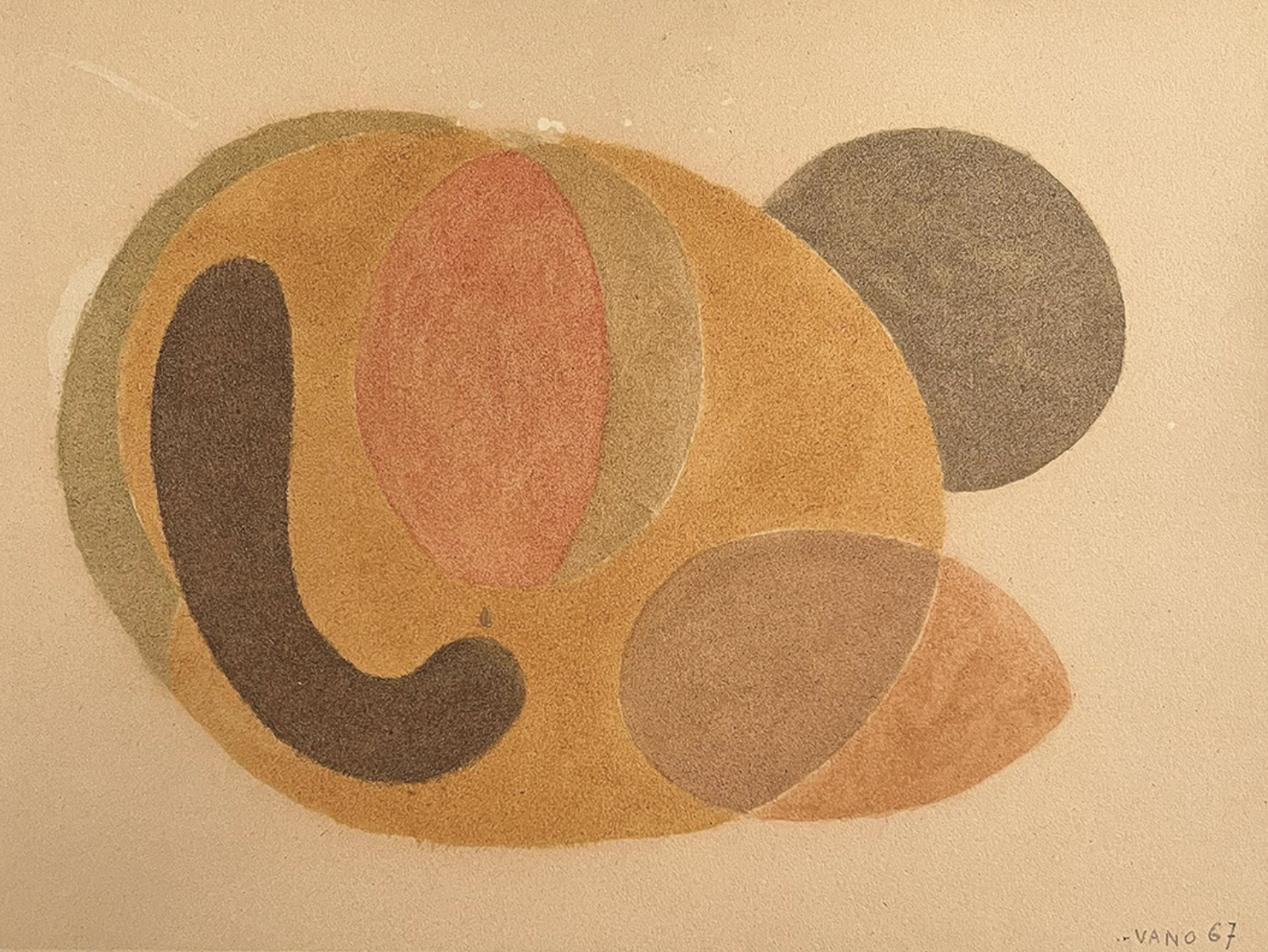
Vano Enukidze (1907-1979). Composition. Mixed technique on paper. 21x27. 1967. Private collection, Tbilisi
Vano Enukidze's works were first publicly exhibited in 1958. He participated in a group exhibition called ‘Salon d'Art Sacre et Realites Spiritualles,’ which was held at the Museum of Modern Art in Paris. This was soon followed by an exhibition at the Galerie Charpentier. Enukidze’s name also appeared in the press of the time. In the period 1958-1979, he regularly cooperated with numerous galleries, and was also displayed in the ‘Salon des Independants.’ In addition to France, Enukidze had personal and group exhibitions in Italy, Germany, Sweden, and Switzerland, exhibiting under the pseudonym VANO. A few of his works were purchased by the Musée d'Art Moderne de la Ville de Paris.
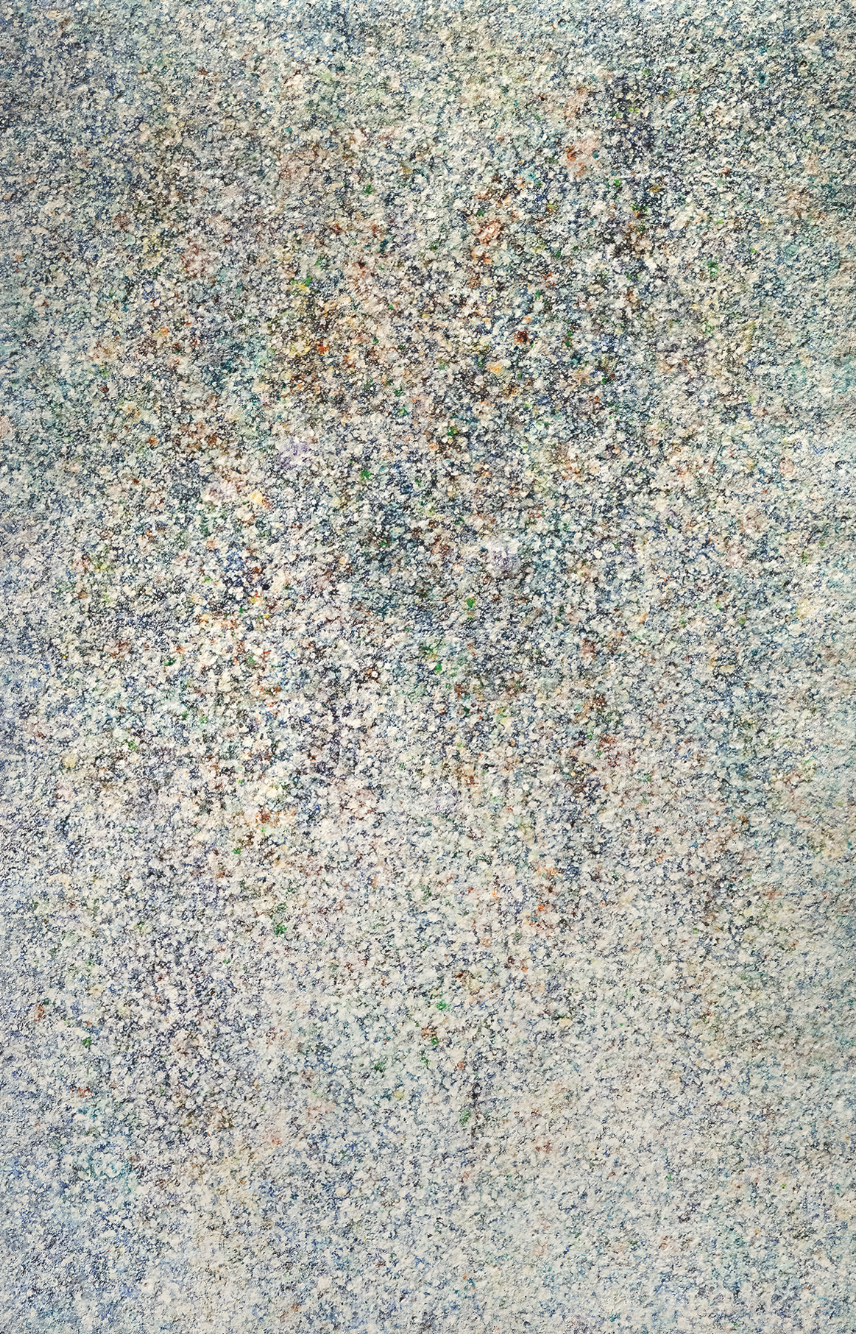
Vano Enukidze (1907-1979). Abstraction. Oil on canvas. 71x45.5. 1950ies. Private collection, Tbilisi

Vano Enukidze (1907-1979). The winter landscape. Oil on canvas. 73.5x42. 1959. Private collection, Tbilisi
In his article ‘Ecole de Paris,’ published in Le Monde on October 16, 1959, journalist and art critic Michele Conil Lacoste wrote: "Vano, an artist of Georgian origin, has been living in Paris since 1930. In 1955, he left his legal career to devote himself to painting. His paintings are reminiscent of coded language, and the compositions resemble shimmering nets that offer the effect of elegancy…"
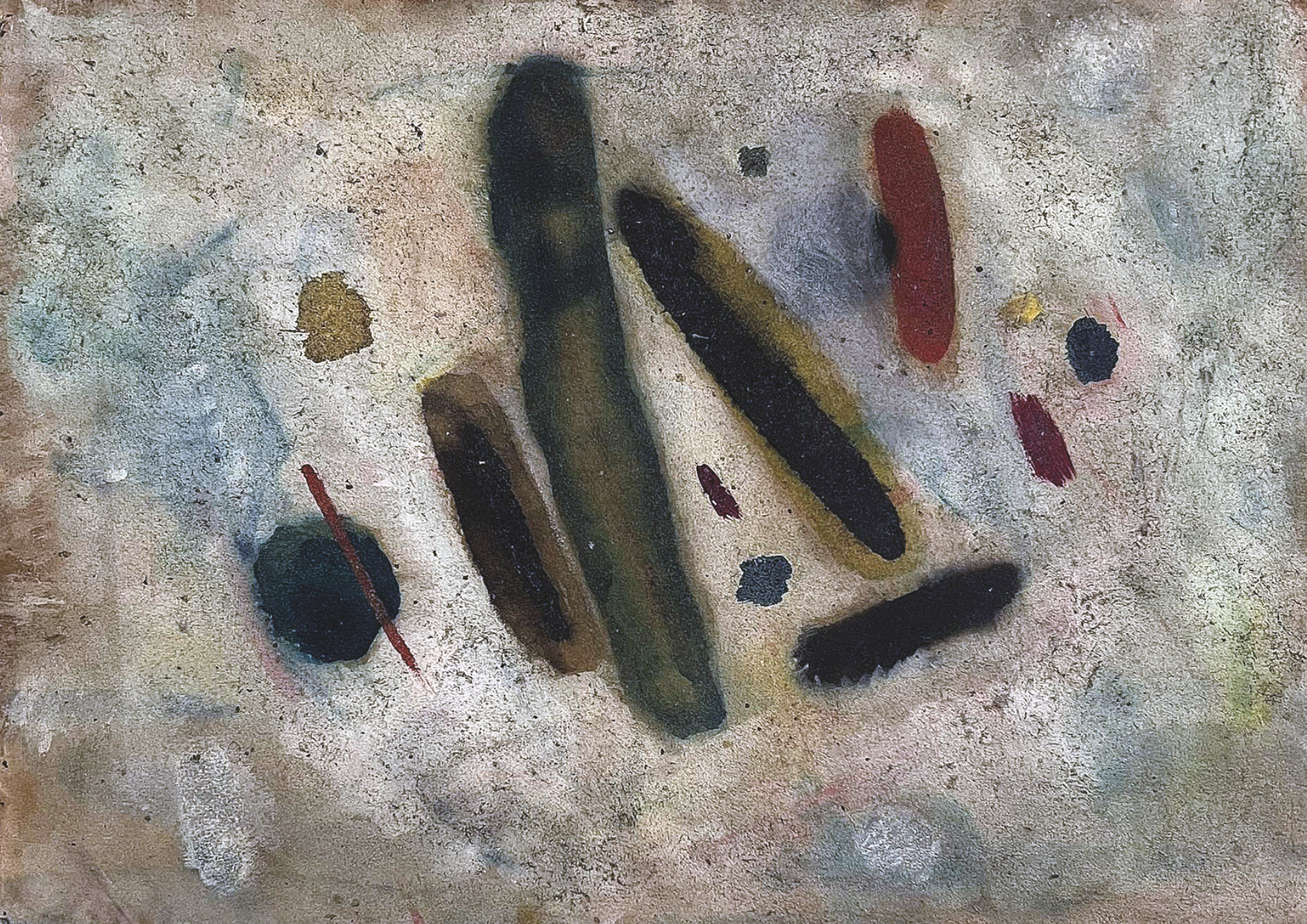
Vano Enukidze (1907-1979). Composition. Mixed technique on paper. 25x35. 1960ies. Private collection, Tbilisi
Vano Enukidze, as a student of Bissier and representative of the French lyrical abstraction of the period, composed "subjectless" pieces, which were distinguished by exquisite taste and unique handwriting. His abstract paintings display light and transparency, and, at the same time, are multi-layered in depth. The dynamic web of regular linear breaks, painterly strokes, and square colored points, creates a strong sense of space. His minimalist compositions are recognizable by their lush texture.
In addition to the rectilinear, the artist occasionally used rounded, semi-oval forms that shine from beneath each layer. Sometimes, there are mere specks of paint in different hues or tones that alternate on the canvas's surface. In some abstractions, a large number of lines, strokes, or dots provide the sense of shimmering and movement. Despite the abundance of shapes, Enukidze had the ability to fill his works with light, resulting in a sense of spaciousness within his compositions, and weightlessness in the creative impression. Due to these characteristics, his magnificent paintings are quickly remembered by viewers, and rank him among the representatives of the powerful school of post-World War II French abstraction.
In the final years of his life, Vano Enukidze suffered from Alzheimer’s. Vera Pagava, his lifelong friend, remained dedicated to him until his death. In 1979, his remains were laid to Leuville Cemetery in France, where many Georgians are buried.

Vano Enukidze (1907-1979). Composition. Mixed technique on paper. 26.5x37. 1960ies. Private collection, Tbilisi
Vano created serene, well-balanced poetic compositions through the use of multiple colors and shapes. The artist set the colors and shapes in motion, occasionally even making them "dance," all of this achieved within a single, defined, harmonious rhythm.